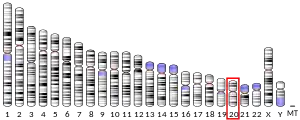| TGM6 | |||||||||||||||||||||||||||||||||||||||||||||||||||
|---|---|---|---|---|---|---|---|---|---|---|---|---|---|---|---|---|---|---|---|---|---|---|---|---|---|---|---|---|---|---|---|---|---|---|---|---|---|---|---|---|---|---|---|---|---|---|---|---|---|---|---|
| Identifiers | |||||||||||||||||||||||||||||||||||||||||||||||||||
| Aliases | TGM6, SCA35, TG6, TGM3L, TGY, dJ734P14.3, transglutaminase 6 | ||||||||||||||||||||||||||||||||||||||||||||||||||
| External IDs | OMIM: 613900 MGI: 3044321 HomoloGene: 27970 GeneCards: TGM6 | ||||||||||||||||||||||||||||||||||||||||||||||||||
| |||||||||||||||||||||||||||||||||||||||||||||||||||
| |||||||||||||||||||||||||||||||||||||||||||||||||||
| |||||||||||||||||||||||||||||||||||||||||||||||||||
| |||||||||||||||||||||||||||||||||||||||||||||||||||
| |||||||||||||||||||||||||||||||||||||||||||||||||||
| Wikidata | |||||||||||||||||||||||||||||||||||||||||||||||||||
| |||||||||||||||||||||||||||||||||||||||||||||||||||
Transglutaminase 6 is a protein that in humans is encoded by the TGM6 gene. [5]
Function and Clinical Significance
The protein encoded by this gene belongs to the transglutaminase superfamily. It catalyzes the cross-linking of proteins and the conjugation of polyamines to proteins. Mutations in this gene are associated with spinocerebellar ataxia type 35 (SCA35). Alternatively spliced transcript variants encoding different isoforms have been found for this gene. [provided by RefSeq, Dec 2011].
Mutations in TGM6 cause acute myeloid leukaemia.[6] The presence of antibodies against TG6 is statistically related to gluten ataxia, amongst other conditions.
References
- 1 2 3 GRCh38: Ensembl release 89: ENSG00000166948 - Ensembl, May 2017
- 1 2 3 GRCm38: Ensembl release 89: ENSMUSG00000027403 - Ensembl, May 2017
- ↑ "Human PubMed Reference:". National Center for Biotechnology Information, U.S. National Library of Medicine.
- ↑ "Mouse PubMed Reference:". National Center for Biotechnology Information, U.S. National Library of Medicine.
- ↑ "Entrez Gene: Transglutaminase 6". Retrieved 2014-04-29.
- ↑ Pan LL, Huang YM, Wang M, Zhuang XE, Luo DF, Guo SC, Zhang ZS, Huang Q, Lin SL, Wang SY (Feb 2015). "Positional cloning and next-generation sequencing identified a TGM6 mutation in a large Chinese pedigree with acute myeloid leukaemia". European Journal of Human Genetics. 23 (2): 218–23. doi:10.1038/ejhg.2014.67. PMC 4297898. PMID 24755948.
Further reading
- Lindfors K, Koskinen O, Laurila K, Collin P, Saavalainen P, Haimila K, Partanen J, Mäki M, Kaukinen K (Jun 2011). "IgA-class autoantibodies against neuronal transglutaminase, TG6 in celiac disease: no evidence for gluten dependency". Clinica Chimica Acta; International Journal of Clinical Chemistry. 412 (13–14): 1187–90. doi:10.1016/j.cca.2010.09.042. PMID 21453693.
- Thomas H, Beck K, Adamczyk M, Aeschlimann P, Langley M, Oita RC, Thiebach L, Hils M, Aeschlimann D (Jan 2013). "Transglutaminase 6: a protein associated with central nervous system development and motor function". Amino Acids. 44 (1): 161–77. doi:10.1007/s00726-011-1091-z. PMC 3535377. PMID 21984379.
- Sherva R, Tripodis Y, Bennett DA, Chibnik LB, Crane PK, de Jager PL, Farrer LA, Saykin AJ, Shulman JM, Naj A, Green RC (Jan 2014). "Genome-wide association study of the rate of cognitive decline in Alzheimer's disease". Alzheimer's & Dementia. 10 (1): 45–52. doi:10.1016/j.jalz.2013.01.008. PMC 3760995. PMID 23535033.
- Grenard P, Bates MK, Aeschlimann D (Aug 2001). "Evolution of transglutaminase genes: identification of a transglutaminase gene cluster on human chromosome 15q15. Structure of the gene encoding transglutaminase X and a novel gene family member, transglutaminase Z". The Journal of Biological Chemistry. 276 (35): 33066–78. doi:10.1074/jbc.M102553200. PMID 11390390.
- Hadjivassiliou M, Aeschlimann P, Strigun A, Sanders DS, Woodroofe N, Aeschlimann D (Sep 2008). "Autoantibodies in gluten ataxia recognize a novel neuronal transglutaminase". Annals of Neurology. 64 (3): 332–43. doi:10.1002/ana.21450. PMID 18825674. S2CID 39872358.
- Stamnaes J, Dorum S, Fleckenstein B, Aeschlimann D, Sollid LM (Nov 2010). "Gluten T cell epitope targeting by TG3 and TG6; implications for dermatitis herpetiformis and gluten ataxia". Amino Acids. 39 (5): 1183–91. doi:10.1007/s00726-010-0554-y. PMID 20300788. S2CID 23702283.
- Guan WJ, Wang JL, Liu YT, Ma YT, Zhou Y, Jiang H, Shen L, Guo JF, Xia K, Li JD, Tang BS (Jan 2013). "Spinocerebellar ataxia type 35 (SCA35)-associated transglutaminase 6 mutants sensitize cells to apoptosis". Biochemical and Biophysical Research Communications. 430 (2): 780–6. doi:10.1016/j.bbrc.2012.11.069. PMID 23206699.
- Scavenius C, Sanggaard KW, Nikolajsen CL, Bak S, Valnickova Z, Thøgersen IB, Jensen ON, Højrup P, Enghild JJ (Dec 2011). "Human inter-α-inhibitor is a substrate for factor XIIIa and tissue transglutaminase". Biochimica et Biophysica Acta (BBA) - Proteins and Proteomics. 1814 (12): 1624–30. doi:10.1016/j.bbapap.2011.08.017. PMID 21939789.
- Wang JL, Yang X, Xia K, Hu ZM, Weng L, Jin X, Jiang H, Zhang P, Shen L, Guo JF, Li N, Li YR, Lei LF, Zhou J, Du J, Zhou YF, Pan Q, Wang J, Wang J, Li RQ, Tang BS (Dec 2010). "TGM6 identified as a novel causative gene of spinocerebellar ataxias using exome sequencing". Brain. 133 (Pt 12): 3510–8. doi:10.1093/brain/awq323. PMID 21106500.
This article incorporates text from the United States National Library of Medicine, which is in the public domain.
This article is issued from Wikipedia. The text is licensed under Creative Commons - Attribution - Sharealike. Additional terms may apply for the media files.



